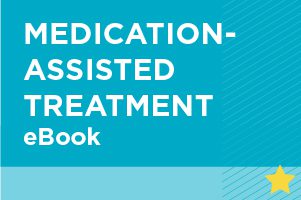There is no “one size fits all” approach to medication-assisted treatment, or even recovery. Recovery is individual. The most important thing to do is to consider all of your options, and speak to a medical professional to determine the best course of action for your family. The best path is the path that helps and works for your child.
About medications for addiction treatment (MAT)
“I wish that all families would at least consider investigating medication-assisted treatment and reading about what’s out there,” says Alicia Murray, DO, Board-certified Addiction Psychiatrist. “I think, unfortunately, there is still stigma about medications. But what we want people to see is that we’re actually changing the functioning of the patient.”
Essentially, medications for addiction treatment (MAT) can help get a patient back on track to meeting the demands of life – getting into a healthy routine, showing up for work and being the sibling, spouse or parent that they once were. “If we can change that with medication-assisted treatment and with counseling,” says Murray, “that’s so valuable.”
Part of the reason it’s so hard to overcome an opioid addiction is that it rewires your brain to focus almost exclusively on the drug over anything else, and, as a result, produces extreme cravings and withdrawal symptoms. By helping to reduce those feelings of cravings and withdrawal, medication-assisted treatment can help your son or daughter’s brain stop thinking constantly about the drug and focus on returning to a healthier life.
Medication for addiction treatment is often misunderstood. Many traditional treatment programs and step-based supports may tell you that MAT is simply substituting one addictive drug for another. However, taking medication for opioid addiction is like taking medication for any other chronic disease, such as diabetes or asthma. When used according to the doctor’s instructions and in conjunction with therapy, the medication will not create a new addiction, and can help.
As a parent, you want to explore all opportunities to get your child help for opioid addiction, and get them closer and closer to functioning as a healthy adult – holding down a job, keeping a regular schedule and tapering, and eventually, stopping their misuse of opioids. Medication-assisted treatment helps them do that.
The three most common medications used to treat opioid addiction are:
- Naltrexone (brand name Vivitrol)
- Buprenorphine (brand name Suboxone)
- Methadone
Naltrexone
Naltrexone, known by its brand name Vivitrol, is administered by a doctor monthly through an injection. Naltrexone is an opioid antagonist. Antagonists attach themselves to opioid receptors in the brain and prevent other opioids such as heroin or painkillers from exerting the effects of the drug. There is no risk of addiction.
Buprenorphine
Buprenorphine, known by its brand name Suboxone, is an oral tablet or film dissolved under the tongue or in the mouth prescribed by a doctor in an office-based setting. It is taken daily and can be dispensed at a physician’s office or taken at home. Buprenorphine is a partial agonist. Partial agonists attach to the opioid receptors in the brain and activate them, but not to the full degree as agonists. If used against the doctor’s instructions, there is a risk of addiction.
Methadone
Methadone is dispensed through a certified opioid treatment program (OTP). It’s a liquid and taken orally and usually witnessed at an OTP clinic until the patient receives take-home doses. Methadone is an opioid agonist. Agonists are drugs that activate opioid receptors in the brain, producing an effect. If used against the doctor’s instructions, there is a risk of addiction.

Download the Medication-Assisted Treatment eBook
Learn the details about medications for addiction treatment (MAT) — what it is, how it’s used and how you can best support your child through treatment.
 Get Support
Get Support
